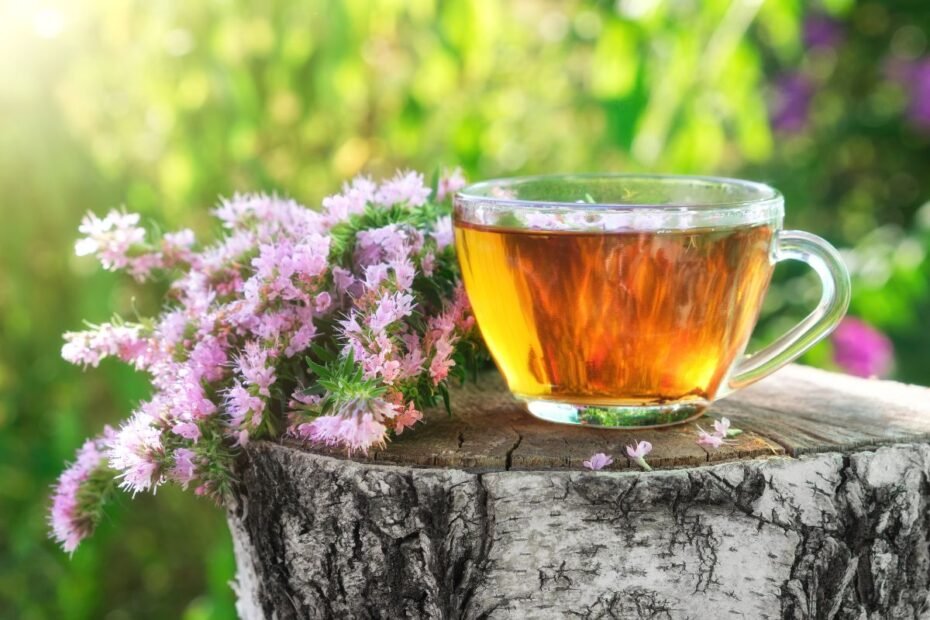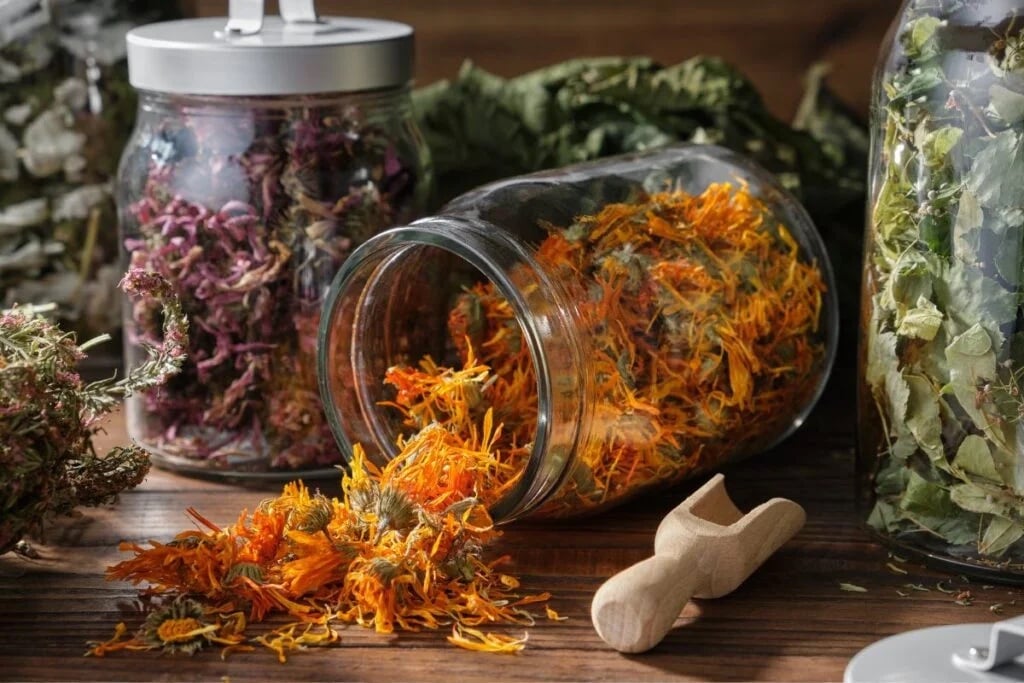Hyssop is a fabulous herbal and medicinal herb. It is also often used in cosmetics and perfumery because of its fragrant scent. Of course, the plant is cultivated as an ornamental plant because of its remarkable appearance. The most common use is in the form of hyssop tea for medicinal purposes. Let’s familiarize ourselves: in which cases hyssop tea benefits are remarkable, and in which cases you should not use it?
What Is Hyssop?
The plant is known and called hyssop in most countries, but it has another name and meaning in some cultures.
In Hebrew, ezov means ‘sacred herb.’ This herb is mentioned in the Bible as a purifying and holy herb. It meant forgiveness of sins, self-purification, and cleansing temples and other hallowed places. The ancient Romans used hyssop to ward off the plague. In the Middle Ages, hyssop became not so much a sacred herb as an herb. People used it to season meat dishes and flavor wine.
Hyssop (Hyssopus) is an ornamental plant and is nowadays grown in flower or spice beds. It is a semi-shrub in the Lamiaceae family, growing to 20–80 cm, depending on the variety. The stems are erect, branched, and woody at the base. The leaves are almost legless, aromatic, linear, or oblong, 2-4 cm long.
First of all, Hyssopus officinalis is an ornamental plant. It produces purple flowers, mostly in July and September. However, other varieties have blue, white, and pink flowers. They also differ in height and compactness.
Second, hyssop is an herb and medicinal plant. All its parts are intensely aromatic. The flowers are full of nectar, attracting bees. The hyssop honey is of the highest quality. The tea from the hyssop is a remedy for many ailments.
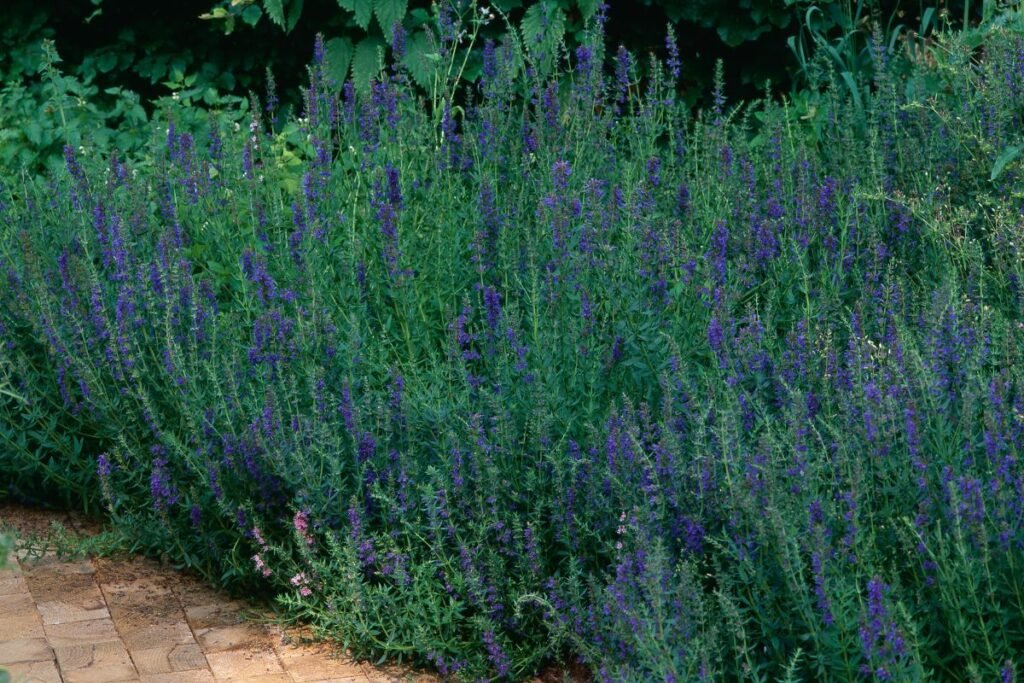
When to Harvest The Hyssop Medicinal Raw Material?
The raw material of the first-year plants is collected once a year in autumn. It can be harvested twice a year in later years: in July and September. The flowering tops of the hyssops are picked with the leaves.
You must collect the medicinal raw material only in dry weather. Pick it up in the morning, but wait until the dew dries.
Tie the peeled tops of hyssop in bundles and hang them upside down on the deck. Choose a dry, well-ventilated room protected from direct sunlight for drying. After drying, chop the raw material and store it in sealed glass or paper bags. It retains its medicinal properties for 1-2 years when stored properly.
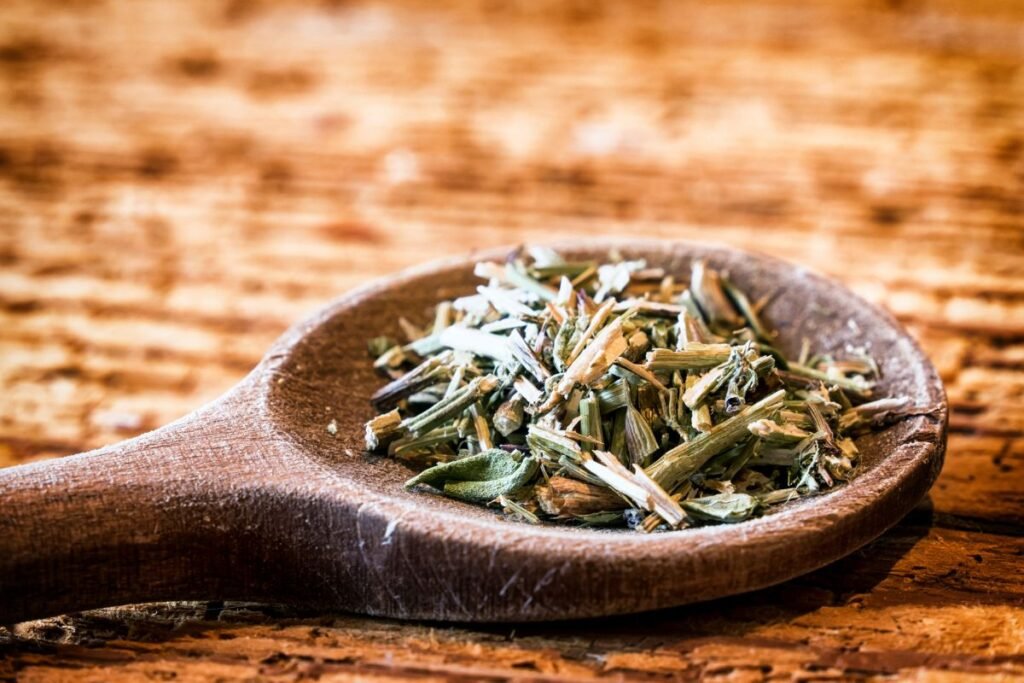
Hyssop Tea Benefits
Folk medicine has used hyssop and its preparations for a significantly long time. However, science is still investigating the medicinal properties of hyssop. However, early research reveals many benefits of hyssop tea and the herb.
Hyssop contains a wide range of active substances that are beneficial to health.
- organic acids;
- tannic substances;
- essential oils;
- glycosides;
- flavonoids;
- minerals;
- resins;
- vitamin C.
Hyssop Tea Benefits for Respiratory Diseases
Traditionally, folk medicine used hyssop tea to treat respiratory conditions such as colds, flu, coughs, and bronchitis, and relieve asthma symptoms. It stimulates expectoration, liquidizing secretions. It is also very suitable for rinsing sore throats, as its anti-inflammatory and antimicrobial properties successfully fight the various bacteria that cause sore throats.
Ingredients:
- 1 tbsp of dried hyssop herb (or 3 tbsp fresh);
- 250 ml of water;
- ¼ fresh lemon juice;
- 1 tablespoon of honey.
Preparation:
Cover the herbs with boiling water and leave them to infuse for 10 minutes. Drain, and add lemon juice and honey. Stir well. Use: drink warm 1-2 times a day.
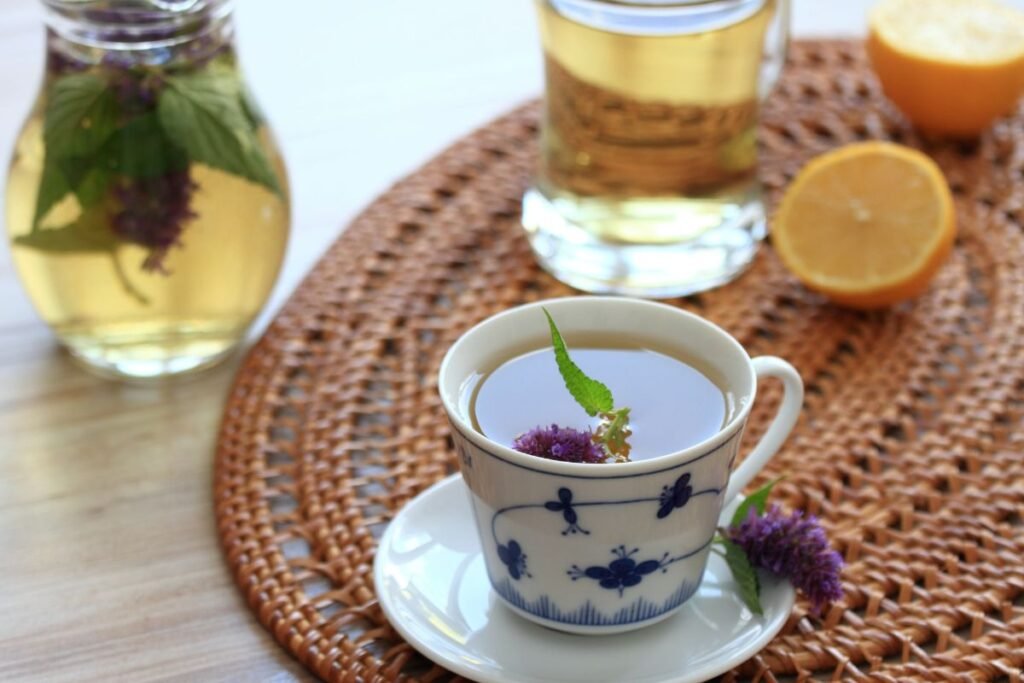
Hyssop Tea Benefits for Women’s Health
Hyssop has antibacterial and anti-inflammatory properties. It means the herb can be helpful in the treatment of urinary tract infections. In addition, it soothes and relaxes the muscles and is especially valuable for painful menstruation and relieving PMS symptoms (e.g., headaches, muscle aches, stomachaches).
Ingredients:
- 25 g of crushed hyssop herb;
- 2 cups of water;
- 1 tbsp. maple or agave syrup (optional).
Preparation: Pour boiling water over the hyssop and leave to infuse for 5–10 minutes. Drain. You can add syrup as desired because hyssop tea tastes bitter. Use 1-2 cups per day.
Hyssop Tea Benefits: to Improve Digestion and Treat Ulcers
Hyssop stimulates the secretion and production of bile, which signals the body to start digestive processes. In addition, the herb soothes intestinal spasms and treats inflammatory processes in the intestines.
Some scientific studies showed that the hyssop effectively treats gastric and peptic ulcers. It contains substances helping to overcome the main chemicals responsible for ulcers: urease and a-chymotrypsin.
Ingredients:
- 2-3 tbsp. of fresh or 1 tbsp. dried hyssop herb
- 2 cups of water
Preparation: cover the hyssop herb with boiling water and leave to infuse for 5 minutes. Drain.
Use: drink warm or cold as needed, but no more than 1-2 cups during the day.

Hyssop Tea Benefits for Strengthening Immunity
This herb has antioxidant and antiviral properties, making it an indispensable tea for boosting immunity. In addition, hyssop tea successfully fights many viruses. Some scientific studies confirmed its effectiveness in overcoming the herpes simplex virus and preventing its reproduction.
Moreover, research is underway that shows hyssop active substances in the treatment of HIV. However, detailed studies are still needed to confirm this.
By the way, hyssop is also a tonic, so drink this tea instead of coffee in the morning. The advantage of hyssop is that it is caffeine-free.
Ingredients:
- 1 tbsp. dried hyssop herb or 2 tbsp. fresh herb
- ½ tbsp. of chopped ginger root
- ½ slice of lemon
- 2 cups of water
- 2 tsp. of honey (optional)
Preparation:
Cover the hyssop herbs and ginger with boiling water and leave to infuse for 5–10 minutes. Drain, add a slice of lemon, and season with honey. Stir well. Use 1 cup in the morning.
Soothing Hyssop Tea
Hyssop tea benefits also include calming, relaxing, and pain-relieving properties. This tea is suitable for calming down after a busy day. As well as drink it for insomnia, stress, constant tension, or hysteria.
Ingredients:
- ½ tbsp. of dried hyssop herb or 6–8 fresh leaves
- ½ tbsp. of dried mint or 2 fresh sprigs
- 1 tbsp. of dried chamomile or 10–15 fresh chamomile flowers
- 3 cups of water
Preparation:
Cover the herbs with boiling water and boil for 3-5 minutes. Leave it to infuse for 5 minutes. Drain.
Use: Take 1 cup in the evening after a busy day or before bed. Or drink one cup in a stressful situation to calm the nerves.
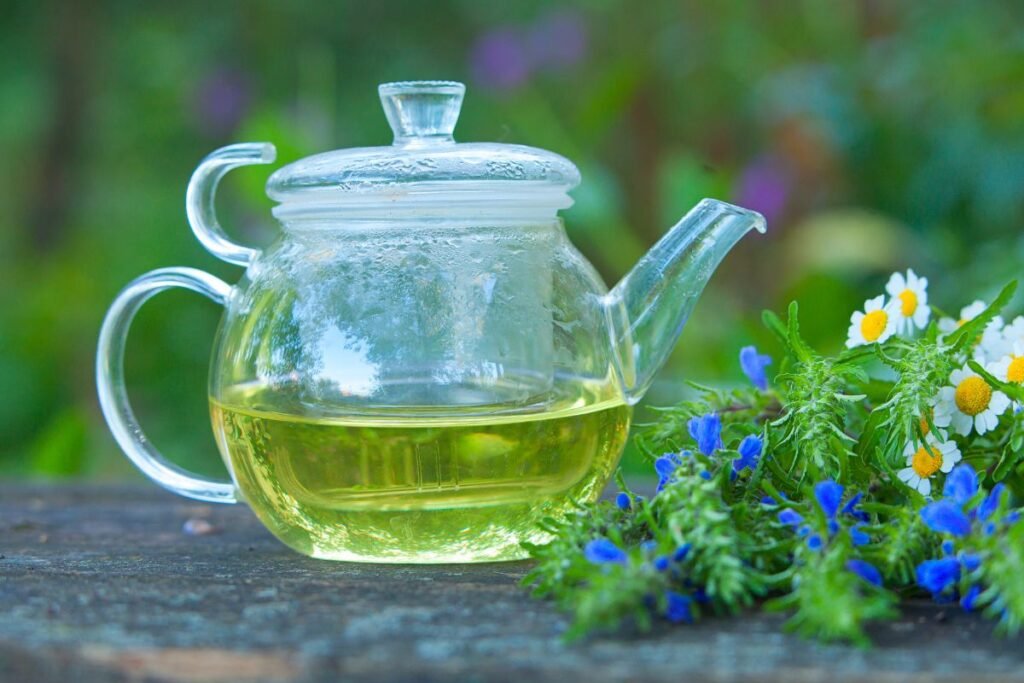
Who Shouldn’t Take Hyssop Beverages?
As sacred an herb as hyssop has been considered to be, unfortunately, like most medicinal plants, it can cause particular side effects. It is also not advisable for some people to take it because of the potential risks.
You should not consume hyssop tea in these situations:
- Breastfeeding mothers as it reduces lactation.
- It is contraindicated in pregnant women as it may cause miscarriage.
- children, epilepsy-suffering persons, or other nervous disorders because it may cause convulsions.
- It is not recommended for people allergic to plants of the Lamiaceae family.
- when people suffer from kidney disease or low blood pressure.
In general, everyone should consume hyssop tea responsibly and in moderation. It is a relatively common cause of side effects such as upset stomachs, anxiety, and tremors. Although these side effects are usually mild, you should stop using hyssop tea immediately when you notice them.
Also, before using hyssop tea to treat illnesses, consult your doctor or pharmacist first.
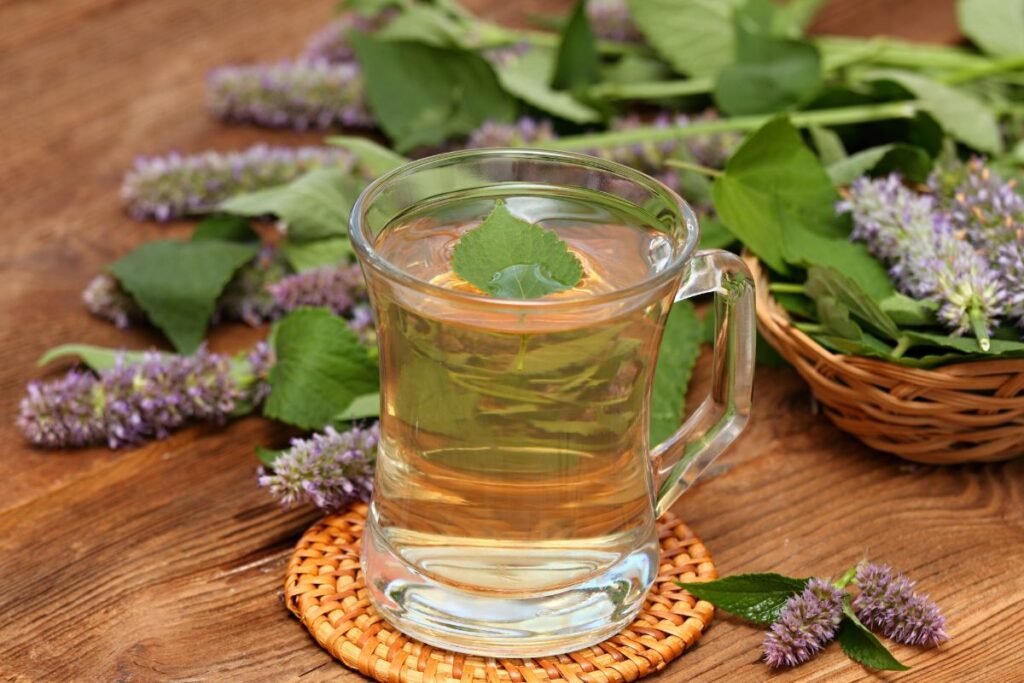
Sources:
https://www.webmd.com/diet/health-benefits-hyssop
https://www.ncbi.nlm.nih.gov/books/NBK548391/
https://www.mdpi.com/2223-7747/10/4/711
https://www.ncbi.nlm.nih.gov/pmc/articles/PMC5052413/
https://southsidepermaculturepark.org/recipes/stress-free-hyssop-tea/
Associative photos from © Canva.
